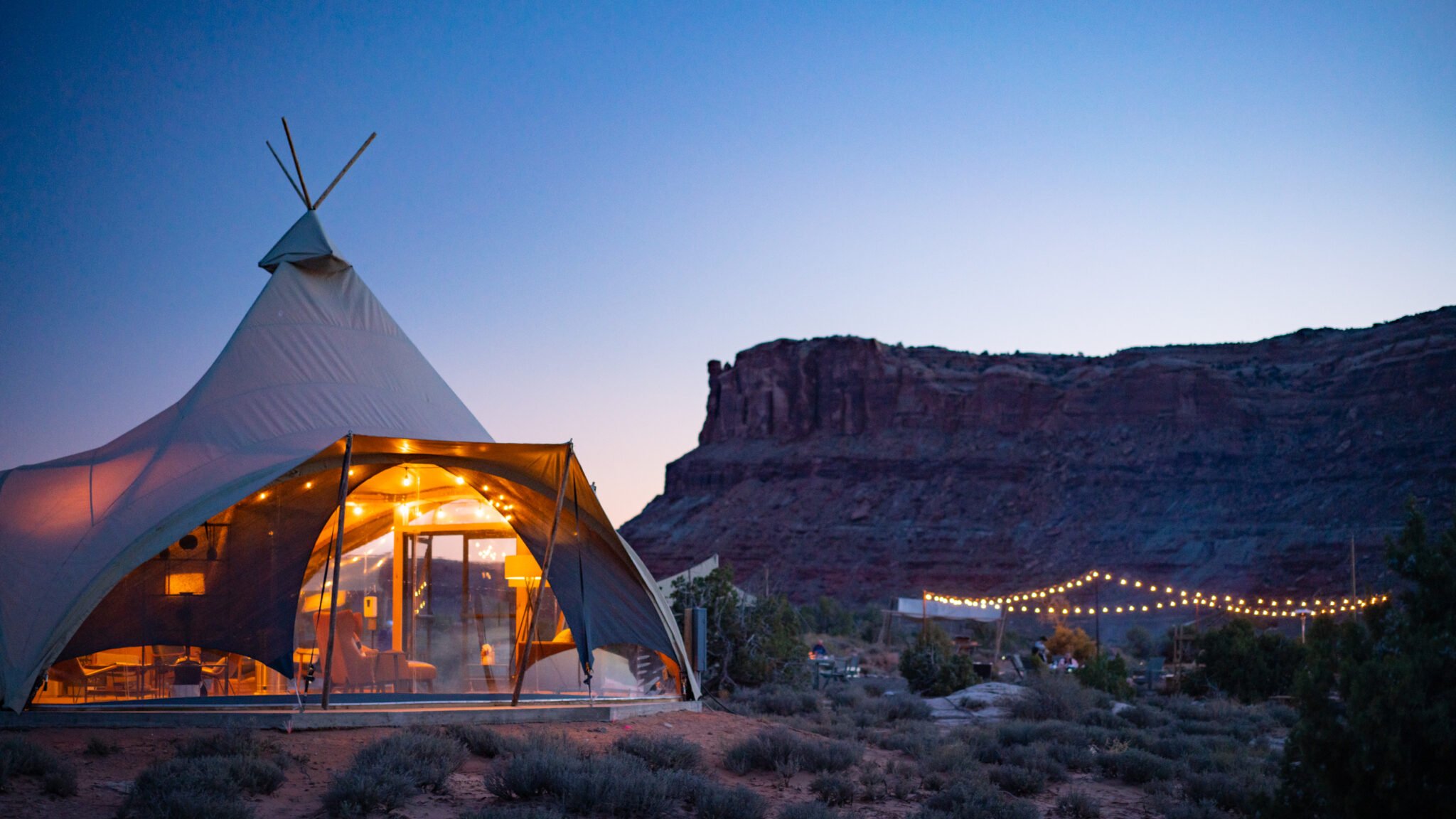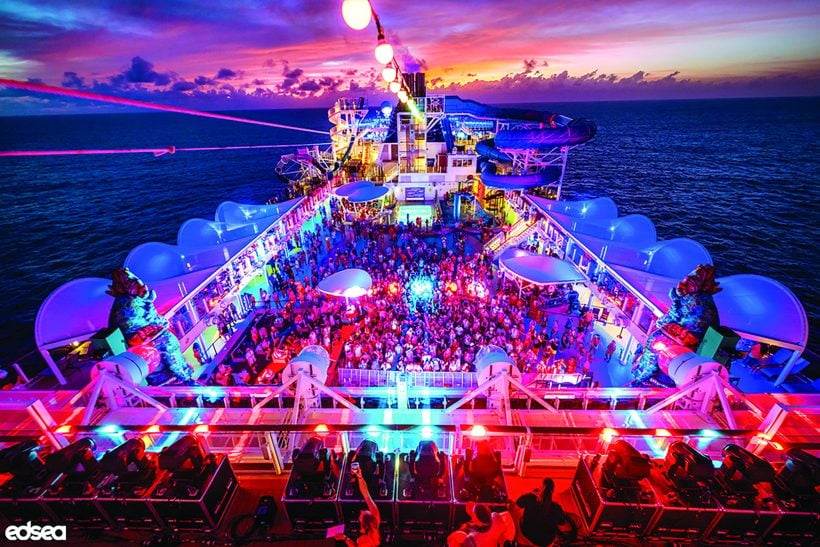My most memorable camping experience came when I was 17, on a road trip with two friends the summer before college. We were at Jenny Lake campground in Grand Teton National Park. I was sleeping without a tent, in a mummy bag on a ground cloth. Just past dawn, I was awakened by a sound to my right, and before I could turn to look, a huge moose was walking right over me, striding majestically. It’s a memory I treasure.
It has been quite a while since I camped, so when the luxury tent-campground outfit Under Canvas offered Worth the chance to experience part of the Grand Circle of Southwestern national parks at four of their sites, I headed west. Under Canvas has developed “upscale, safari-inspired accommodations” near national parks in the U.S., including my targets, a concentration of four camps near five spectacular national parks in southern Utah and northern Arizona. “Luxury” and “camping” had not hitherto been words I put together, and the neologism “glamping,” which has infected the national vocabulary over the past decade, brought to mind mostly pictures of obsessively restored midcentury-modern camping trailers, with period-appropriate draperies and kitchen utensils. “Luxury” and “tent” did not really fit into my conception of things. This trip would allow me to put the idea to the test.

The first stop was Under Canvas Bryce Canyon, the newest of their 10 locations. The site, at about 7,600 feet, is gently rolling, and dotted with pinyon, juniper, and Ponderosa pine trees, which provide homes for birds, give voice to the passing winds, and nicely screen the various campsites from one another.
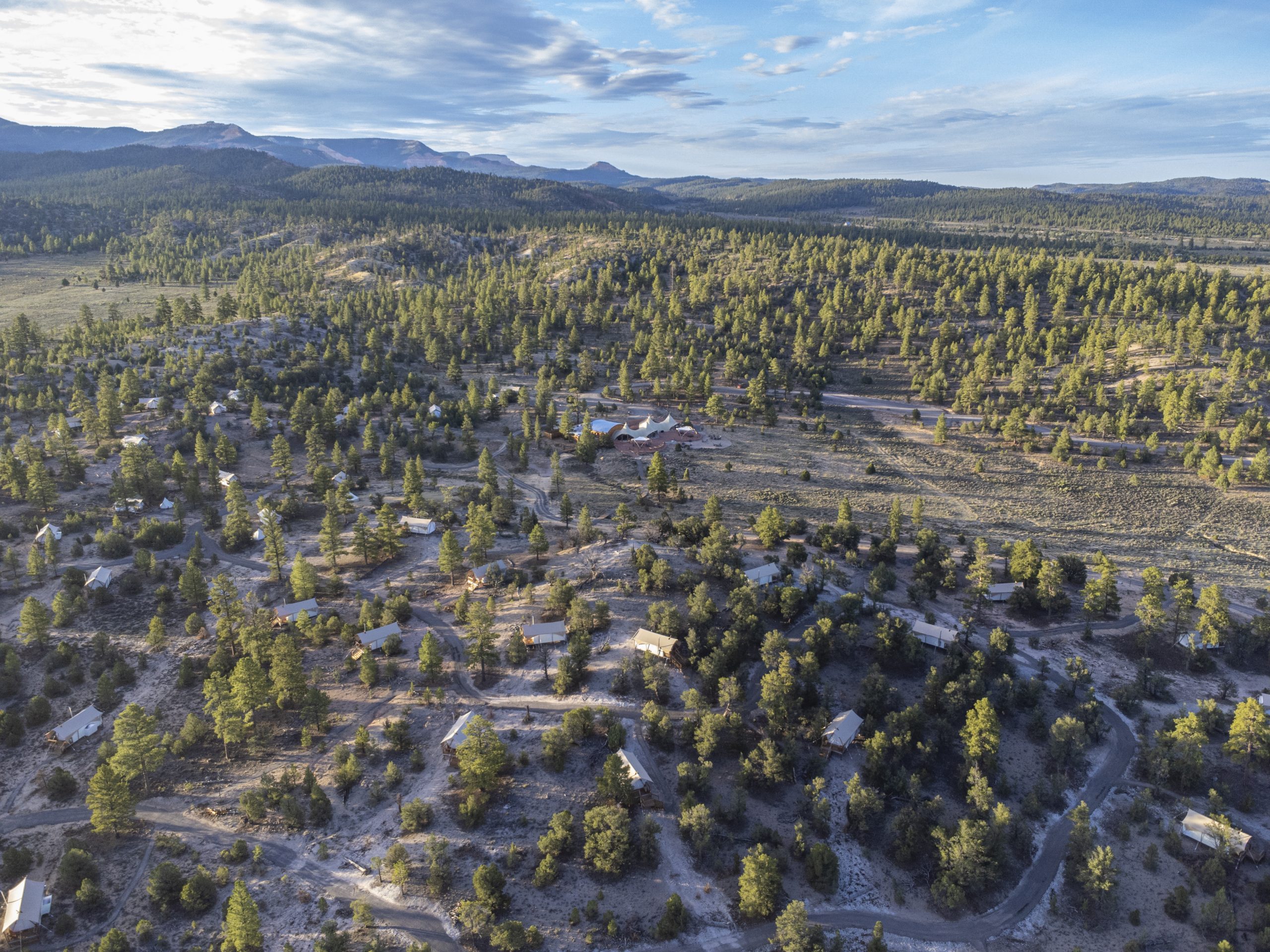
As I checked in, I first encountered what would be a common experience–the people who work there are just really nice. They are knowledgeable and genuinely enthusiastic about about their location, are eager to help, and are ready with suggestions for local hikes and activities, including the activities on site.
At check-in, you are briefed on how the tents work–and these are no ordinary tents. Under Canvas has given much thought to elevating the overall experience of tent camping. I was booked into a Deluxe tent, which is more than ample for two persons, with high ceilings and plenty of elbow room. The tent is pitched over a wooden platform, with a cowhide rug to liven things up. The furnishings include a king bed, side tables, and a couple of leather butterfly chairs. But the supreme luxury is an en suite bath area with sink, shower, and real flush toilet. There are screened windows with flaps you can unzip to allow in more air and light, if you choose. The entry is a pair of zippered flaps, the first opaque, the second screened, so you can see out without allowing bugs or other critters in, or close both for privacy. And because at that altitude it gets cold at night, there is a cleverly designed small wood-burning stove inside the tent, already laid with wood, kindling, and fire-starter that makes it easy for any camper to get a blaze going. There are also Stargazer tents–a Deluxe tent with a small extension by the head of the bed with a clear panel so you can fall asleep looking at the heavens–and larger suites, with more room and a fold-out sleeper-sofa. (There is also a less expensive tent option, without a bathroom but with access to a bath house with toilets and showers.)

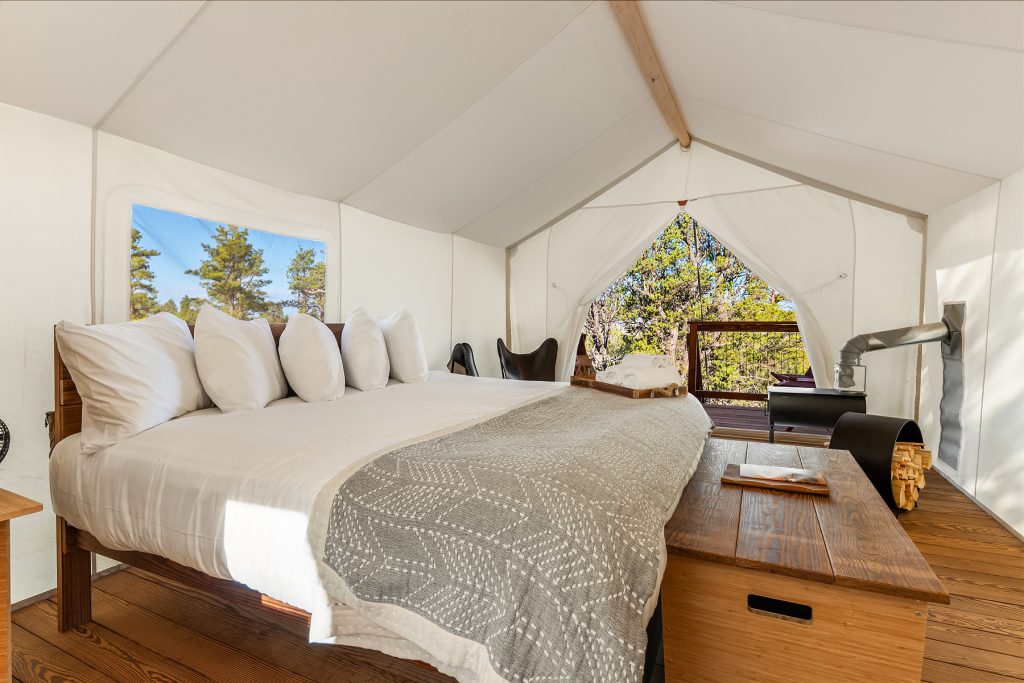
There is no electricity to the tents–battery-powered lamps and fans provide light and airflow within, and USB battery packs keep them all running and allow you to recharge your phone. But don’t plan on working from your tent–Under Canvas proudly does not provide wifi service–the point, after all, is to connect with nature, not with the office. Some camps have decent cell signals available, others not so much. It’s OK–you are on vacation, in one of the most spectacular landscapes in the world. But if you are hoping to work remotely, this is not the place for you.
Of all the hikes I have taken, my favorite is Bryce Canyon’s Fairyland Loop. Tectonic forces, wind, and water have shaped the local sediments into a fantastic drip-castle landscape of pink, white, tan, and orange spires called hoodoos, and the trail takes you down and up and down and up through a hallucinatory landscape of mesas and gullies, capped by an implausibly blue sky. It’s a challenging hike, but worth it.
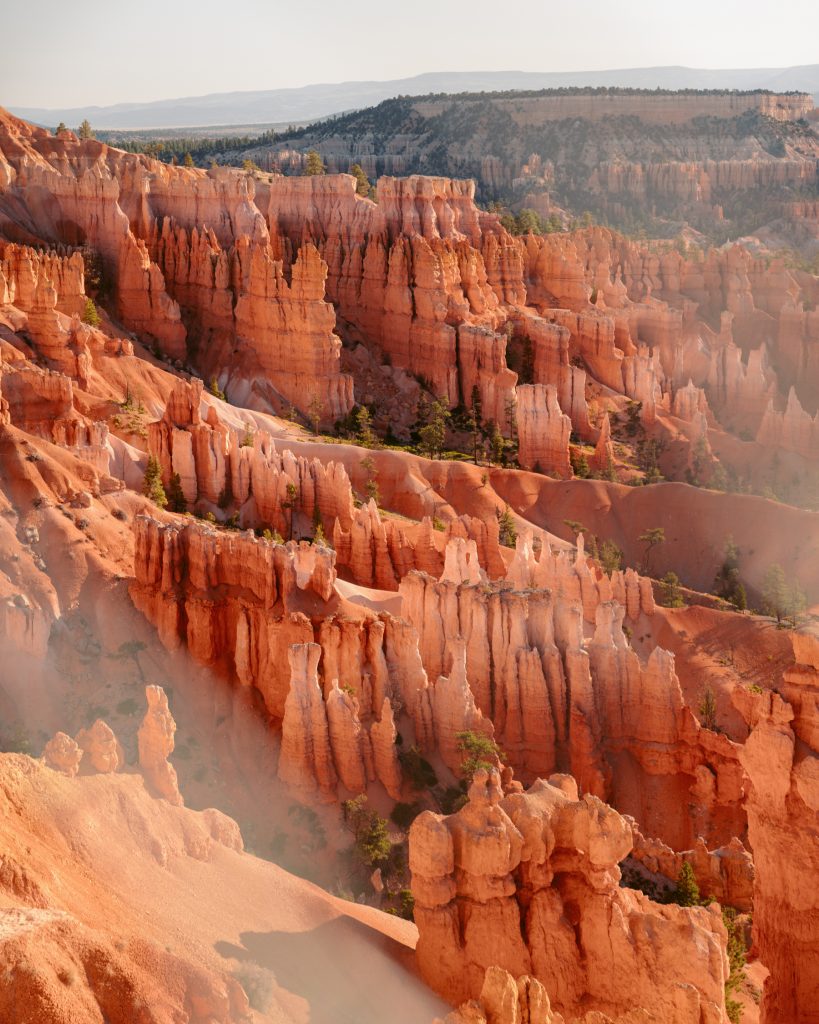
The hiking left me with a powerful hunger, and Under Canvas was prepared. Their Bryce Canyon location has food service, as do their camps at Zion and the Grand Canyon; the Moab camp, which is convenient to both Arches and Canyonlands National Parks, was one of the first three Under Canvas locations, and does not serve a full menu, although there are grab-and-go options like sandwiches and yogurt. All the locations have round-the-clock free coffee–the Bluestone Lane coffee at Bryce was particularly tasty. The menus are limited but good, ranging from healthy choices rich in ancient grains and greens to the signature Under Canvas Burger, which can be Angus beef, bison, or a Beyond burger (there are also special items for kids). The Bryce location is so new that their liquor license has not yet come through, but beer, wine, and cocktails are generally available at their locations. Forewarned about this situation, I had laid in a couple of cans of local brew, but after my long hike, as I sat on my porch admiring the views, I did wish there was a hot tub nearby to sooth my arching muscles, or a spa where I could book a restorative massage.
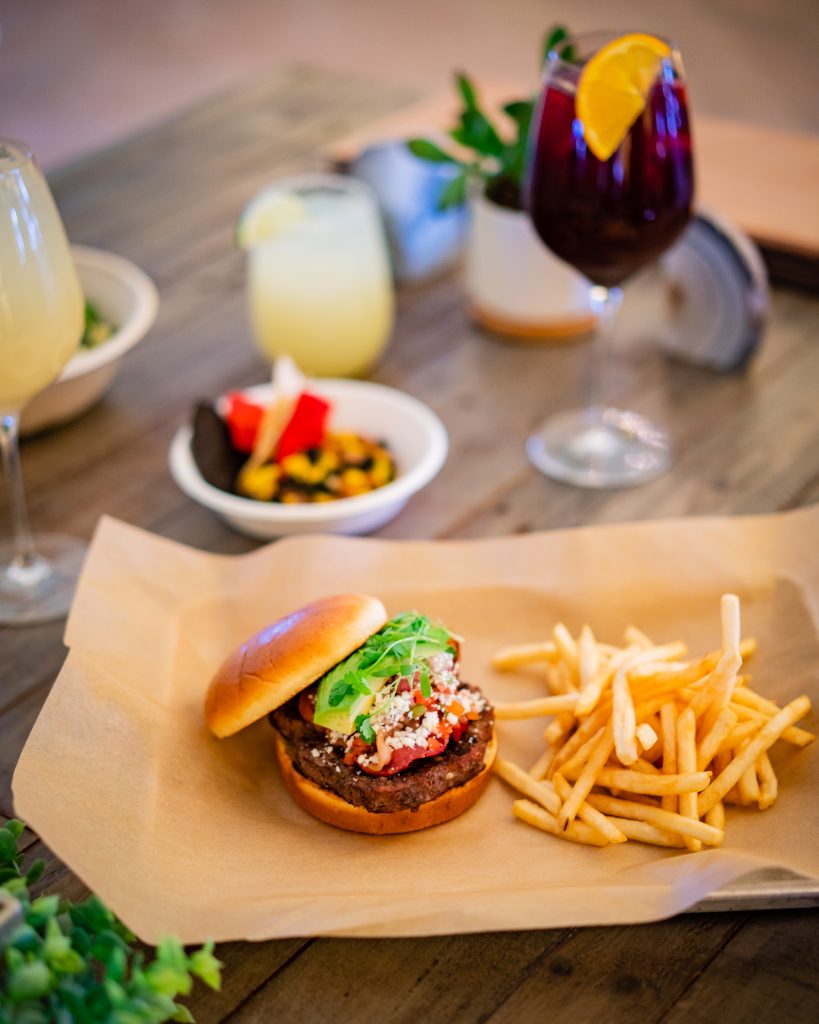
There may be no spa, but there are plenty of activities. All the camps show an understanding that their guests, however eager they may be to commune with nature, are habituated to their electronic devices, and that without wifi, guests can feel a bit lost. So Under Canvas provides an array of in-camp experiences, including morning yoga sessions (which were well attended), local musicians playing during dinner, cornhole games, and evening activities such as bingo, trivia contests, guided stargazing, and s’mores roasting over fire pits.
My trip took place during the school year, so kids were in short supply, but they are well provided for. I suspect any younger child’s favorite aspect of Under Canvas would be the tepee-like tents that are adjacent to some of the grownup tents, allowing kids to spend the night near their parents, but with sufficient distance for a sense of adventure.
After Bryce my itinerary took me to Under Canvas Zion–a glorious site, which sits in a valley with colorful mesas on three sides and a more open view toward the west. Orientation included the usual instruction in the operation of the tent, as well as advising that scorpions, rattlesnakes, and tarantulas are found on the property. It was a salutary (and rather thrilling) reminder that you are, for all the luxury, still camping. And one of the highlights was a morning quest to observe a lovely tarantula getting its day underway. Having only encountered tarantulas in zoos and James Bond movies, I was surprised to find the sight of one in the wild delightful, and not at all scary.
Under Canvas also attracts a great variety of human visitors. The relaxation of travel restrictions has unleashed pent-up demand for explorations not only by Americans but by cabin-fevered travelers from around the world. The Bryce location, which just opened, had seen a majority of non-U.S. guests in its first weeks, and one night at Zion I looked out from the front porch of my tent and saw a procession of six women in brightly colored saris making their way toward the outdoor dining tables. It was a riot of color that complimented the polychrome vistas of the surrounding mesas.
For international and domestic visitors, the Under Canvas properties solve a real problem. There are beautiful campgrounds in these national parks, but getting a spot requires a level of planning and luck roughly equivalent to winning entry to a highly selective college. The national parks are a victim of their own success, particularly since the travel restrictions of the worst of COVID-19 awakened many more Americans to them. It’s hard to find spots there–and the same goes for the lovely old-school lodges at some of the parks. And many commercial campgrounds are aimed at RV nomads, not tent campers.
After Zion, I headed to the Grand Canyon, a drive of about 300 miles, which even with one or two quick stops can take six hours. But one shouldn’t think of the drives on the Grand Circle as a chore, as the views out your car window are extraordinary, particularly on this stretch, which takes you along the seemingly endless sandstone palisades of Vermilion Cliffs National Monument. Under Canvas Grand Canyon is set in the open spaces of the Coconino Plateau about 20 minutes south of the park entrance. Hiking down into the Grand Canyon is an astonishing experience, sublime views mixed with steep descents and seemingly steeper climbs back out. Your knees will feel it. Wisely, all the Under Canvas locations stock a supply of trekking poles which guests may borrow.
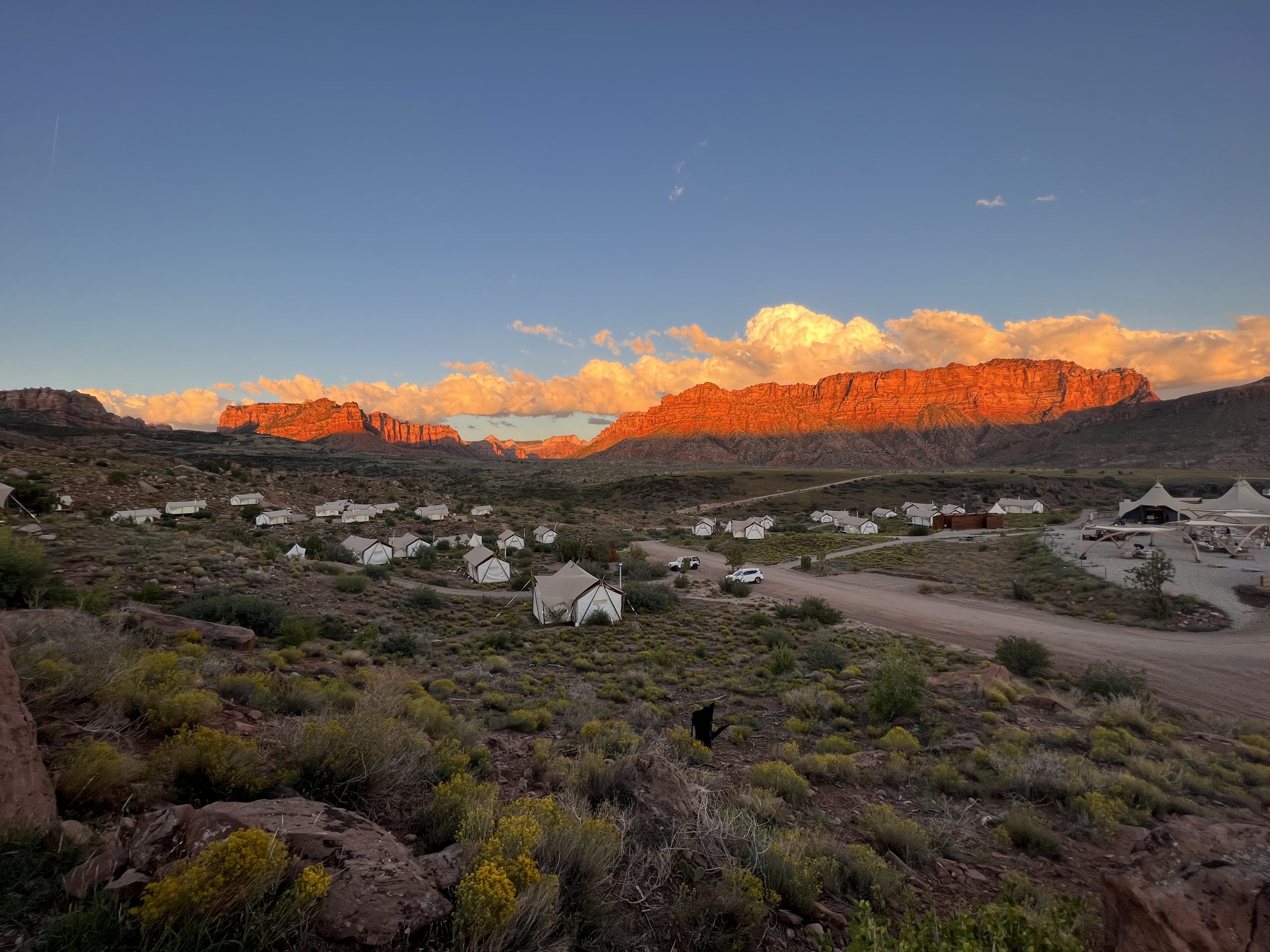
Still, for all the thoughtfulness behind the design of the tents and the layouts of the campground, you are still in a tent, in a challenging environment. Beyond the potential, however unlikely, of encountering a rattlesnake or scorpion, there is the more quotidian challenge of waking up in a tent when it is 40 degrees outside (and in). That’s where the wood-burning stove comes in. You may shiver while getting the fire started, but soon the tent is becoming toasty, and you can warm up with a nice hot shower before grabbing some hot coffee and a tasty breakfast. And you walk to that breakfast through a Southwestern desert landscape touched by a morning light simultaneously gentle and intense, and fragrant with the incense of other camp stoves.
The sounds of nature are one of the delights of a night in a tent. At Bryce it was the lowing of cattle on the open rangeland near the camp. Elsewhere, the early morning howls of coyotes, the cries of elk, or the nattering of chipmunks provided the soundtrack. And in a strong wind the tents themselves provide a sort of running commentary, as the wind thrums and the sturdy wood frame that anchors the tent creaks during heavy gusts. By morning things are generally more still, and once your stove has warmed things up, you open your tent flaps to see dawn paint the mesas to the west. With your back warmed by the stove you can stand on the porch and gaze out on some of the most glorious vistas in the world.
From the Grand Canyon it was another long, Technicolor drive back to Utah, where Under Canvas Moab provides easy access to Arches and Canyonlands. Arches is the easiest of these parks to enjoy while staying close to your car, with many short hikes. Arches has also had to make efforts to control the influx of visitors, with timed entry permits now required during the busy times.
Canyonlands, the least well known of these parks, has some of the most spectacular and fascinating trails of all, particularly some of the longer hikes in the less-visited Needles District. In the canyons there, one can see relics of the ancestral puebloans, who built granaries and other structures here a millennium ago. And in the most remote part of the park, called The Maze, are found pictographs created more than 2,000 years ago.
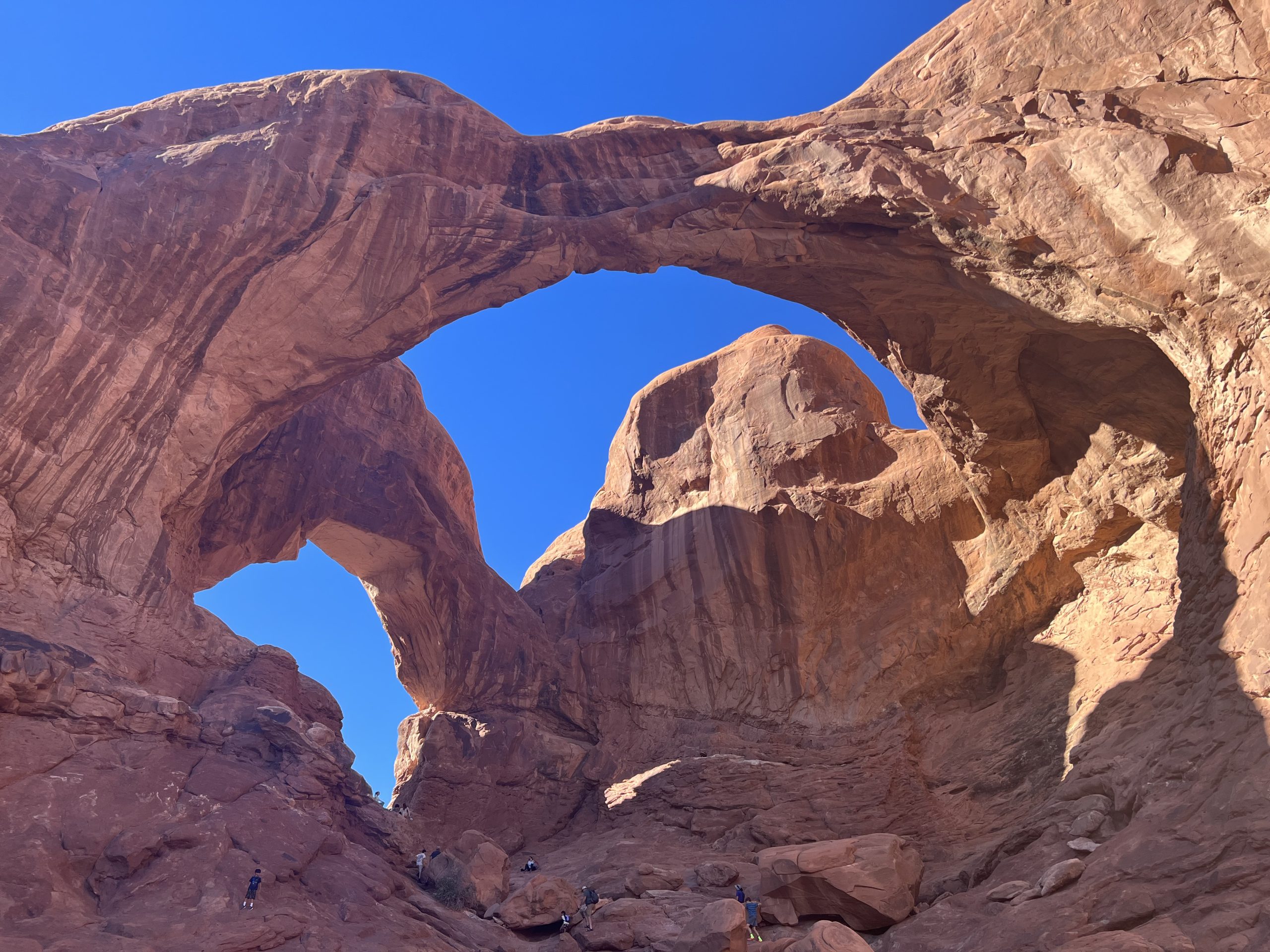
Moab is a center for mountain biking and off-road driving, and Canyonlands National Park is one of the most beloved destinations for off-roaders. So Under Canvas Moab has a partnership with the new electric-truck and -SUV manufacturer Rivian that has placed two charging stations for Rivian vehicles at the campground. It seems a very on-brand effort by both. Rivian trucks are luxurious, yet sustainability is central to their identity. And the same is true of Under Canvas. Sustainability is part of their DNA. The campgrounds are designed and run with constant attention to their environmental footprint, and that is a big attraction for both guests and the people who work there. For guests the message comes through not with stridency but simply as part of the surroundings. The way the Under Canvas properties sit on the land, the views they offer, even the products they stock gently underline the importance of living in harmony with the environment.
After completing the Great Circle and returning home, I spoke with the CEO of Under Canvas, Matt Gaghen, because I wanted to know how they attract and retain such impressive employees. Of course, getting to work in such beautiful spots is a huge draw, but Under Canvas also provides housing for them, encourages their interest in the hospitality industry, and provides paths to management positions. They also allow–and encourage–people to work in multiple locations during a year. A person might open one of the warmer-weather camps like Moab in the early spring, head north to Glacier National Park during the summer, and return to Moab as fall arrives. For people who care about spending time in nature, the chance to do it professionally, for an outfit that has a clear commitment to sustainability, has abundant appeal, and guests profit from the employees’ enthusiasm.
In the end, the Under Canvas Grand Circle experience left me thinking a lot about what luxury is. One of the campground general managers told me that what they offered their customers was experiences. And the experience of staying in a tent, in a beautiful spot near a great national park, is tremendously valuable. Sometimes, when we think about luxury, we think about things, treasures we can collect–fine watches, vintage cars, paintings and sculpture. But there are also experiences we treasure–like sitting in a tent warmed by a wood fire and hearing the coyotes yowl, of being directed to a lesser-known hiking trail that leads past natural wonders, or waking up to the sight of a moose walking over your sleeping bag.
Under Canvas prices range from $344/night to $1,249/night depending on location, season, and package.

